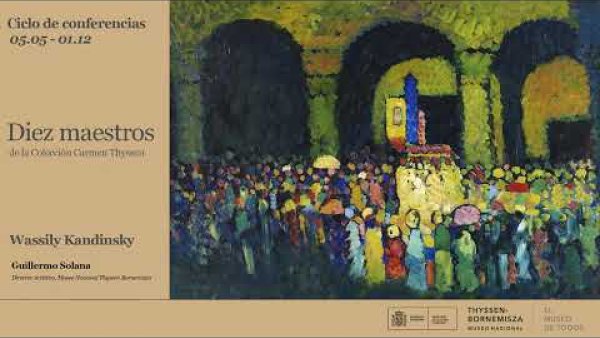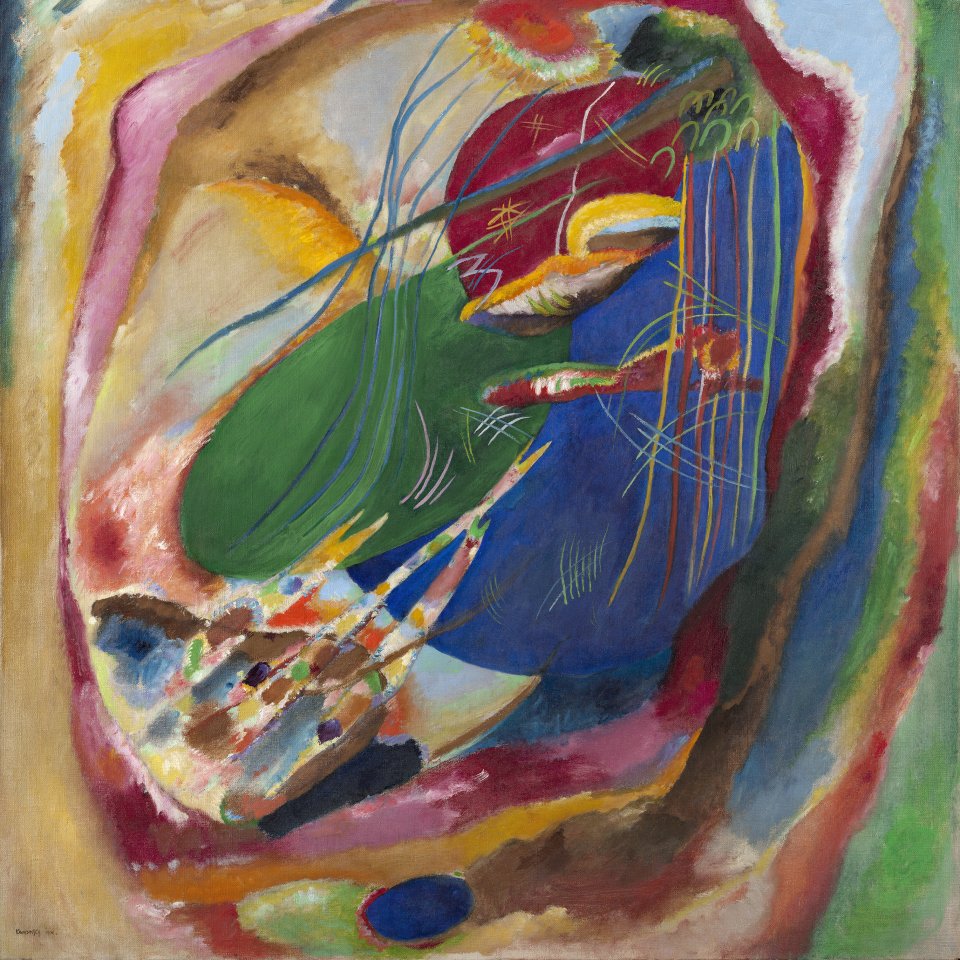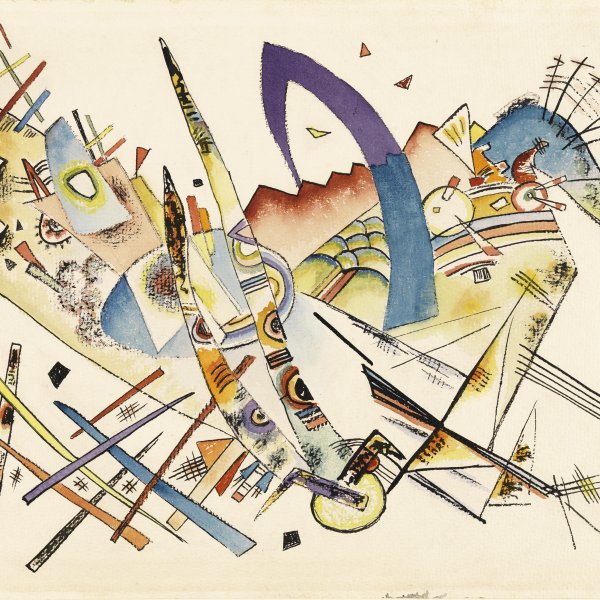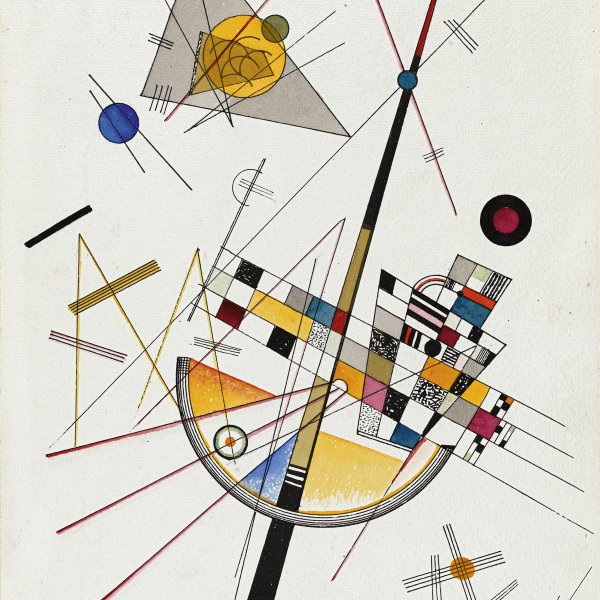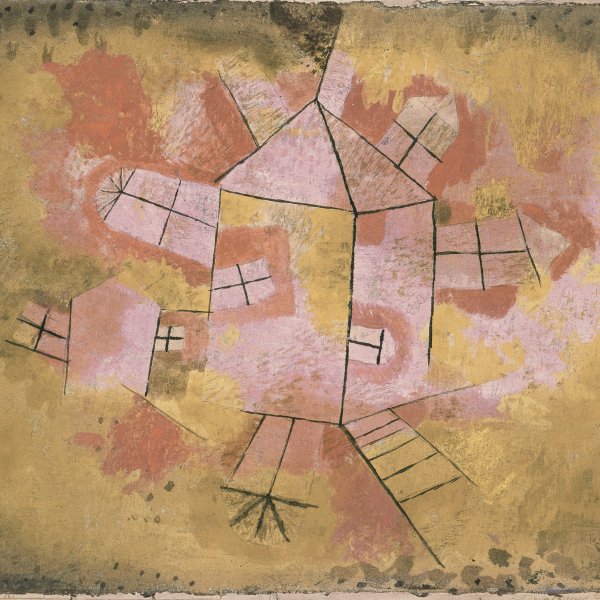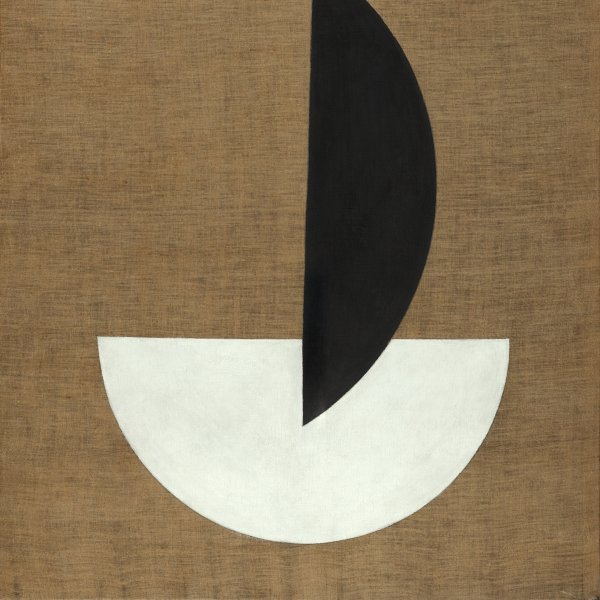In the Bright Oval
In the Bright Oval, which featured as number 313 on the painter’s handwritten list, was painted in 1925, by which time the Bauhaus, then directed by Walter Gropius, had already moved from Weimar to Dessau. That year Kandinsky had finished the essay Point and Line to Plane developing his theories on the meaning of form and colour as autonomous elements within the composition. Kandinsky discussed the psychological repercussions of colours and the relationship between form and colour with his students, and taught them how to associate the three primary colours — red, yellow and blue — with the three basic geometric shapes: the triangle, the square and the circle. However, In the Bright Oval should not be regarded as a composition that experiments with certain geometric elements since, like many earlier paintings, it has an underlying cosmic meaning.
The work was shown at the Galerie Nierendorf in Berlin in October 1925, shortly after being completed, and during the following two years it was included in the exhibitions staged to commemorate the painter’s sixtieth birthday. In 1929 it travelled to the United States as part of a Kandinsky exhibition at the Oakland Art Gallery, organised the previous year by the dealer and collector Galka Scheyer, the main promoter of the art of the members of the German Expressionist group known as The Blue Four (Feininger, Jawlensky, Kandinsky and Klee).
Paloma Alarcó

